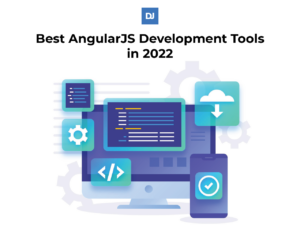High-performing large language models like ChatGPT have completely changed the generative AI sphere by enabling higher degrees of automation and human-like interactions. Prompt engineering has emerged as an essential process for maximizing these models’ potential.
AI prompt engineering aims to optimize the model’s output to provide logical and relatable answers. Thus, the secret to maximizing the potential of generative AI in communication and content creation is to grasp prompt engineering.
This blog explains prompt engineering in detail and its role in enhancing smooth interactions between humans and machines. Read on to find out more!
Understanding Prompts in Prompt Engineering
Prompts form the basis for our human-like interactions with all large language models. For example, you need to key in a prompt of any form to initiate an interaction and the flow of communication with a tool such as ChatGPT.
Some models work with text or audio prompts, while others interact with a combination of both. In the field of Generative AI, prompts help to train machine learning models by supplying input data and desired outcomes.
Entering a prompt into a large language model will teach its systems to produce results that are meaningful, and improve the entire user experience.
Common types of prompts include:
- Text prompts are common in chatbots and educational materials.
- Audio prompts is any form of a sound cue or spoken instruction that prompts to interact with an AI model. Audio prompts are common on interactive voice response (IVR) and voice-controlled systems.
- Multi-modal prompts combine two or more modes. For example, you can combine an audio and text prompt for a more engaging user experience than using just text alone. Multi-modal prompts are common in AR applications, such as navigation apps.
Components of Prompt Engineering
Prompt engineering is closely related to the intricate technical workings of artificial intelligence models. Here is a closer look at its key elements:
1. Model Architectures
Transformer architectures serve as the foundation for large language models like ChatGPT. Using self-attention techniques, these architectures enable models to comprehend context and manage enormous volumes of data.
A prompt engineer needs to understand these underlying systems to create prompts that are successful.
2. Top-k Sampling and Temperature
LLMs employ methods such as temperature setting and top-k sampling during response generation to ascertain how an output is diverse and unpredictable. For example, answers could be more varied at a greater temperature.
In most cases, maximizing an AI model’s outcomes requires prompt engineers to frequently modify these settings.
3. Gradients and Loss Functions
Deeper down, the gradients and loss functions of the model affect how it behaves during prompt response. These mathematical components guide the entire learning process of the AI model.
Prompt engineers usually don’t modify these directly. However, they ought to be aware of their effects to better understand how the model behaves.
Key Applications of Prompt Engineering
Prompt engineering has numerous applications across a wide range of industries. For instance, marketers create and modify copy using generative AI tools like ChatGPT. They can use the prompts to adapt their copy and present the result to the reader.
Key uses for prompt engineering include the following:
- At the AI-powered writing tool Jasper.ai, a prompt engineer is in charge of creating efficient text prompts for the product’s backend
- The auditing and accounting company KPMG needs a prompt engineer to create and manage AI-based conversation systems that assist clients in analyzing datasets
Latest Developments in Prompt Engineering
Recent developments in prompt engineering have had a big impact on how we communicate with AI models, especially Large Language Models. Some of the major developments include:
1. Enhanced Knowledge of Context
Notable progress has been made in comprehending the context and complexity in LLMs, particularly in models like GPT-4 and beyond. These models are now able to understand complex instructions, take into account a wider context, and give more accurate answers.
A portion of this progress can be attributed to the ever-more sophisticated training methods that make use of a variety of datasets. The training enables the models to gain a deeper understanding of the intricacies of human communication.
2. Adaptive Prompting Techniques
AI models are increasingly designed to encompass adaptive prompting. This allows them to modify responses, which can easily be edited according to the user’s style and likings.
This is a strategy of personalization that make AI conversations organic. For example, if a user is prone to asking questions in a certain style, then the AI system should adapt by providing either short answers or vice versa.
The Role of a Prompt Engineer
Optimizing AI prompts is a key way to improve AI models’ output. A prompt engineer’s role is to ensure that the AI models can communicate and provide valuable outputs.
The skills required to be a successful prompt engineer vary widely by industry and the responsibilities of the particular position. However, all prompt engineers need to know how to ask the right questions in a way that an AI model will understand.
If you’re looking to hire a prompt engineer for your firm, here are some of the critical skills you should look out for:
Technical skills
A prompt engineer should have a strong foundation in the following technical skills;
- They should understand Natural Language Processing methods and algorithms
- Familiarity with the underlying architectures of large language models such as GPT and others is necessary.
- A prompt engineer should be able to examine model outputs, see trends, and draw conclusions based on facts.
Non-technical skills
Besides the technical side of things, an excellent prompt engineer requires a variety of non-technical talents, such as:
- They should be proficient with language, syntax, and semantics to create prompts that work
- This skill allows them to assess model results, point out biases, and facilitate non-skewed AI procedures
- They should be able to think creatively, try new prompts, and develop original solutions.
Final Thoughts
Despite being a relatively young field, prompt engineering is the key to maximizing the capabilities of AI models, particularly large language models (LLMs). Overall, the impact of innovations in generative AI is profound—and we’re just at the beginning, with tools such as ChatGPT, Goggle Bard, and Google Gemini taking center stage.
Effective communication and human-like interactions are also imperative as these models grow increasingly ingrained in our everyday lives. That’s why companies that want to harness the power of generative AI and AI-powered tools are hiring prompt engineers with the right skillset.
This role is essential for companies building AI-driven products or planning to incorporate AI tools into their internal processes. At DistantJob, we’re the leading hiring marketplace for dedicated Prompt Engineers who can handle critical engineering development projects and more.
Our skilled AI prompt engineers are vetted to fit your project needs, leveraging advanced AI technologies like NLP and tools like OpenAI, Midjourney, and DALL-E. Contact us today to hire prompt engineers for your successful AI project implementation.




